Inside the Asian Lantern galleries

Detail from Jitish Kallat Public notice 2 2007 installed in the Asian Lantern galleries
Explore the themes in our Asian Lantern galleries and some of the artworks you’ll encounter.
The galleries dedicated to Asian art at the Art Gallery of New South Wales have been reinvigorated with two fascinating new displays that juxtapose contemporary and historical art – with one exhibition looking at the natural elements, and the other exploring history and time.
In the exhibition titled Elemental, themes of earth, fire, water, metal, wood, void, and wind or air are presented either in material and depiction, or through more subtle references, to revel in the stories and connections disclosed by individual works of art.
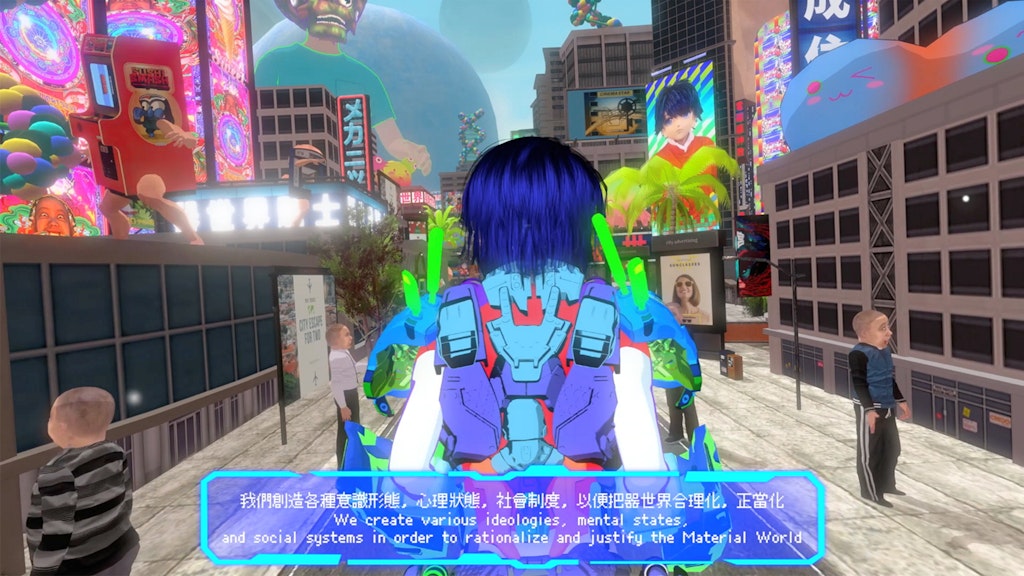
Lu Yang The great adventure of material world - game film 2020 (video still), Art Gallery of New South Wales © Lu Yang
Located at the entrance on lower level 1 is Lu Yang’s 2020 work The great adventure of material world – game film, which brings together science fiction with Hindu and Buddhist iconography. The Material World Knight travels through earthly realms, heavens and hells, experiencing each element of the Chinese wuxing philosophy of five interconnected constituents – reflecting the journey through the exhibition.
The destructive and regenerative qualities of fire are revealed in works of art spanning centuries, from an ancient Japanese vessel of the Jōmon period (10,500 BCE – 300 BCE) to Armenian photographer Ohannes Kurkdjian’s photographs of the May 1901 volcanic eruption of Mount Kelud in Java, Indonesia and Song Dong’s 2001 single-channel video Burning mirror.
The section devoted to earth includes a newly acquired folding screen that features a map of Japan painted around 1830, and stories of the historical or ‘earthly’ Buddha Shakyamuni in Phaptawan Suwannakudt’s Lives of the Buddha 1997–98.
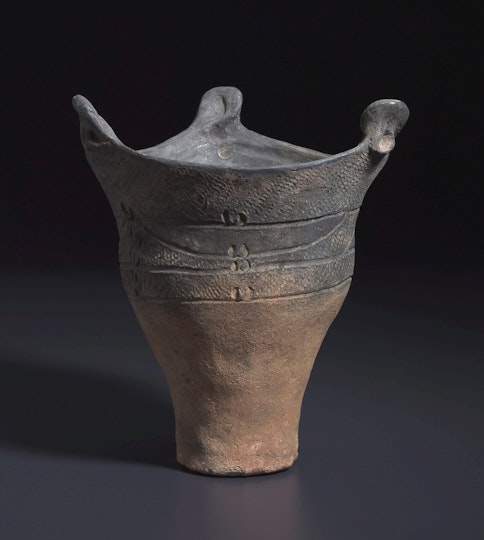
Jômon ware Jar c6000BCE – c3000BCE, Art Gallery of New South Wales
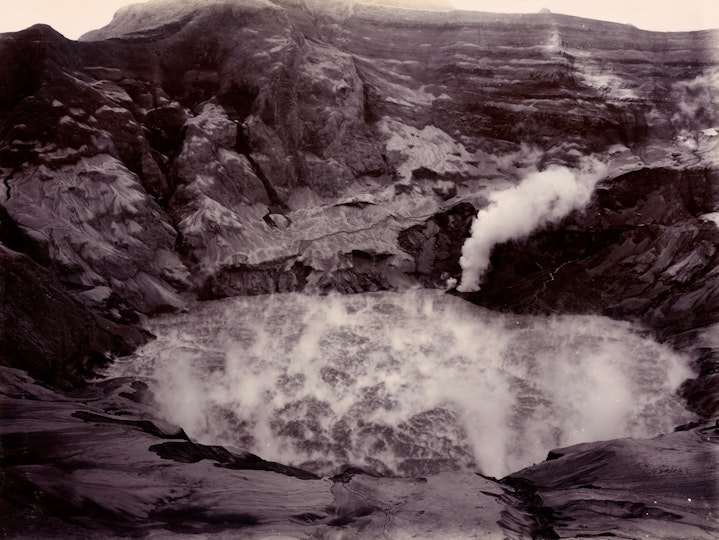
Ohannes Kurkdjian Mount Kelud volcano eruption no. 3 (A closer view of crater) 1901, Art Gallery of New South Wales
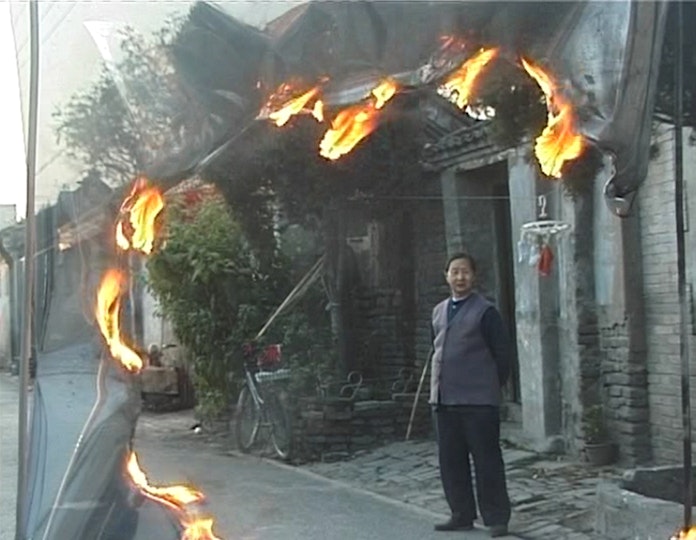
Song Dong Burning mirror (Beijing 2001) 2001 (video still), Art Gallery of New South Wales © Song Dong
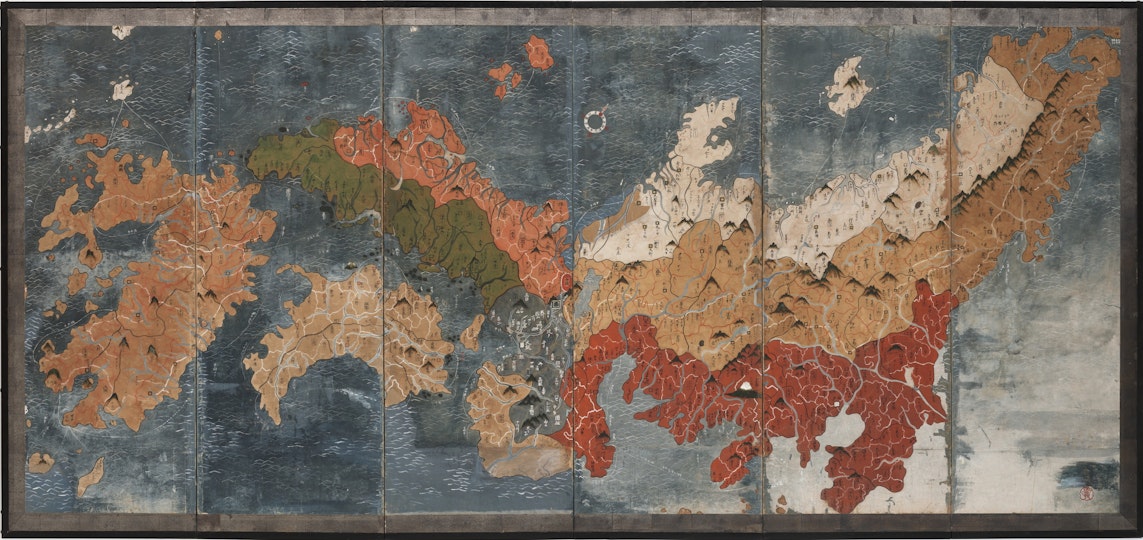
Attributed to Sugae Ryo Map of Japan c1830, Art Gallery of New South Wales
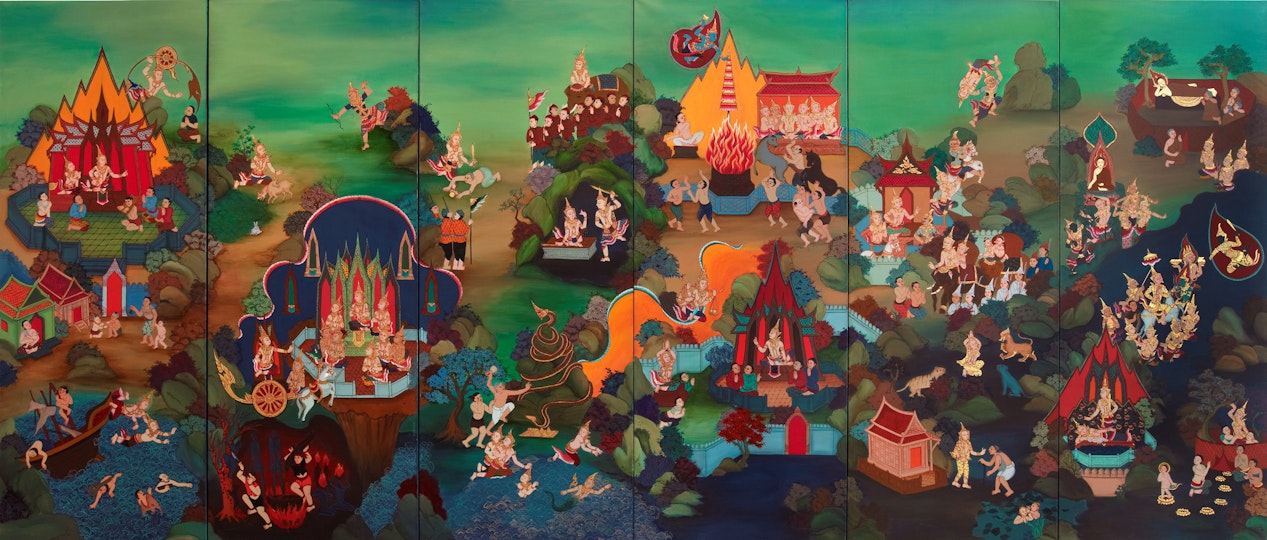
Phaptawan Suwannakudt Lives of the Buddha 1997–98, Art Gallery of New South Wales © Phaptawan Suwannakudt
Bronze, gold and silver shimmer in the section on metal, the creation of which often relies on fire, earth and water to be formed into sculpture and jewellery. A magnificent gilded bronze sculpture of the Buddhist saviour (bodhisattva) Padmapani from Nepal joins Nam June Paik’s Buddha game 1991, in which little golden Buddha sculptures sit inside a TV.
The element of wood in the wuxing, and related Japanese gogyo, corresponds in the Vedas of south Asia with air or wind, known as vata or vayu. Among the many fascinating collection works is a man’s undershirt made in China in the 1800s from bamboo.
Water wends through each element and appears in the Art Gallery’s tearoom, which features Igawa Takeshi’s recently acquired work To the sea 2009.
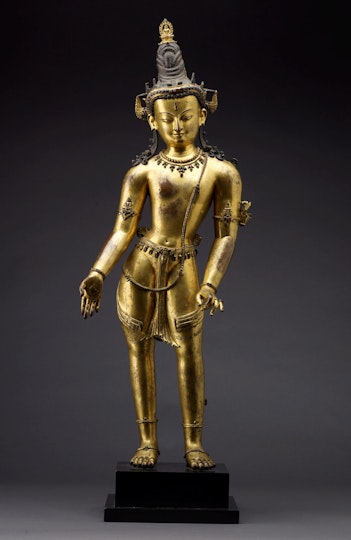
Padmapani, Nepal, 1200s, Art Gallery of New South Wales
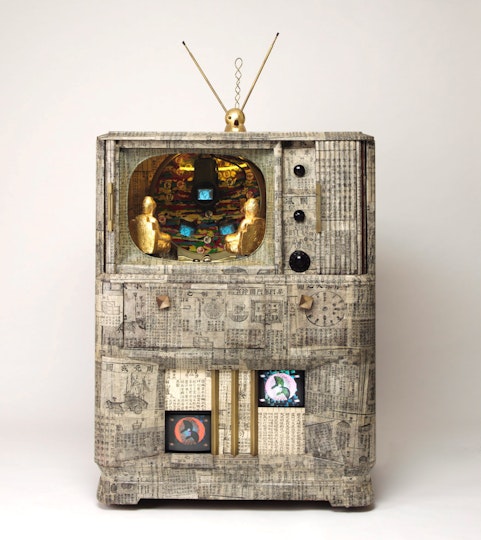
Nam June Paik Buddha game 1991, Art Gallery of New South Wales © Nam June Paik Estate
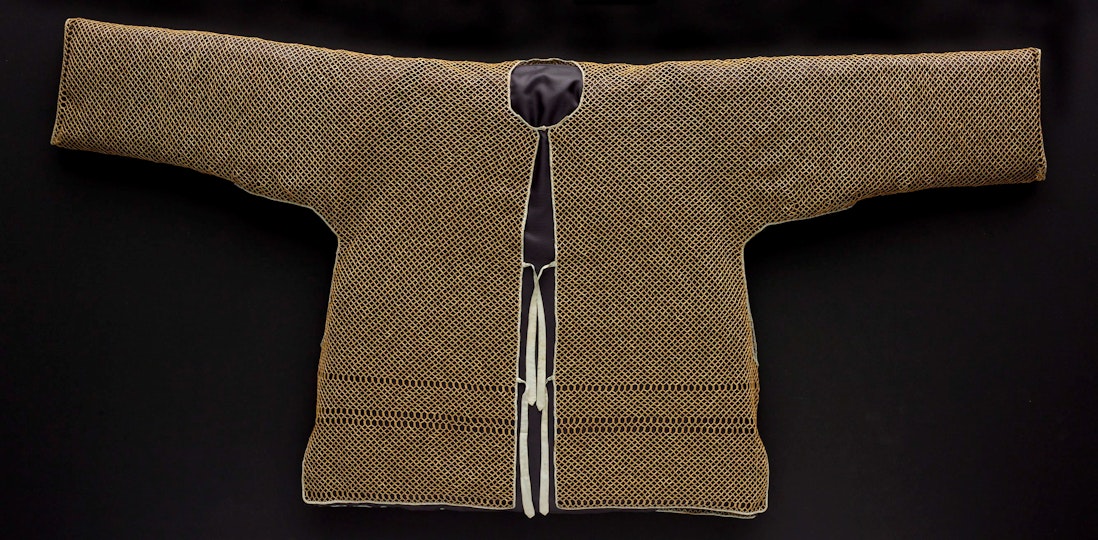
Man’s bamboo undershirt, China, 1800s, Art Gallery of New South Wales
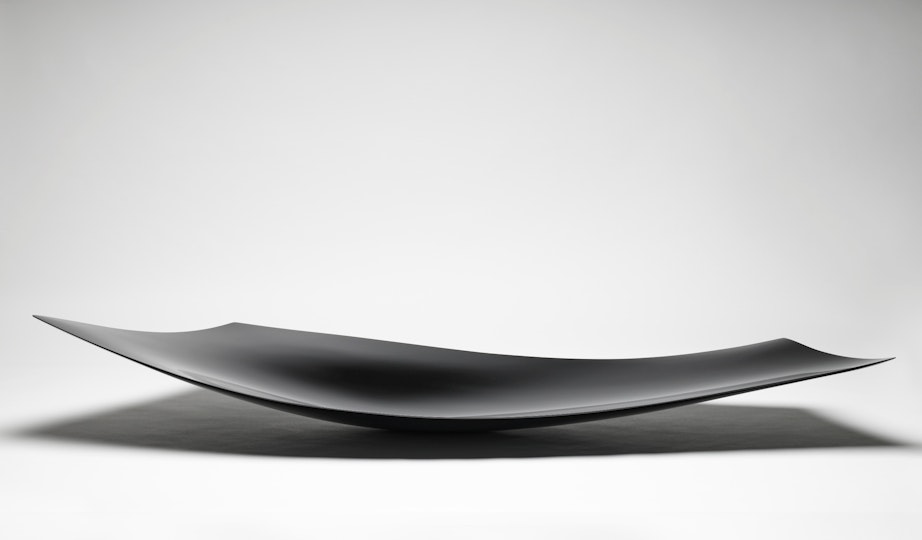
Igawa Takeshi To the sea 2009, Art Gallery of New South Wales © Igawa Takeshi
Complementing this investigation of the elements, the exhibition in the ground-level gallery, titled Correspondence, follows a path through historical moments.
Lining the centre of this gallery is Jitish Kallat’s installation Public Notice 2 2007, which restates the words of Mahatma Gandhi’s famous salt tax speech of 1930.
Bangalore-based photographer Pushpamala N’s black-and-white series Phantom Lady or Kismet: a photo-romance 1996–98 references the Australian-born Fearless Nadia in the 1935 Wadia Brothers film Hunterwali.
An extraordinary representation of Sydney as imagined by Tsukioka Yoshitoshi from his home in Edo (Tokyo) in 1866 is exhibited for the very first time, in our own reimagining of these much-loved spaces in our Art Gallery.
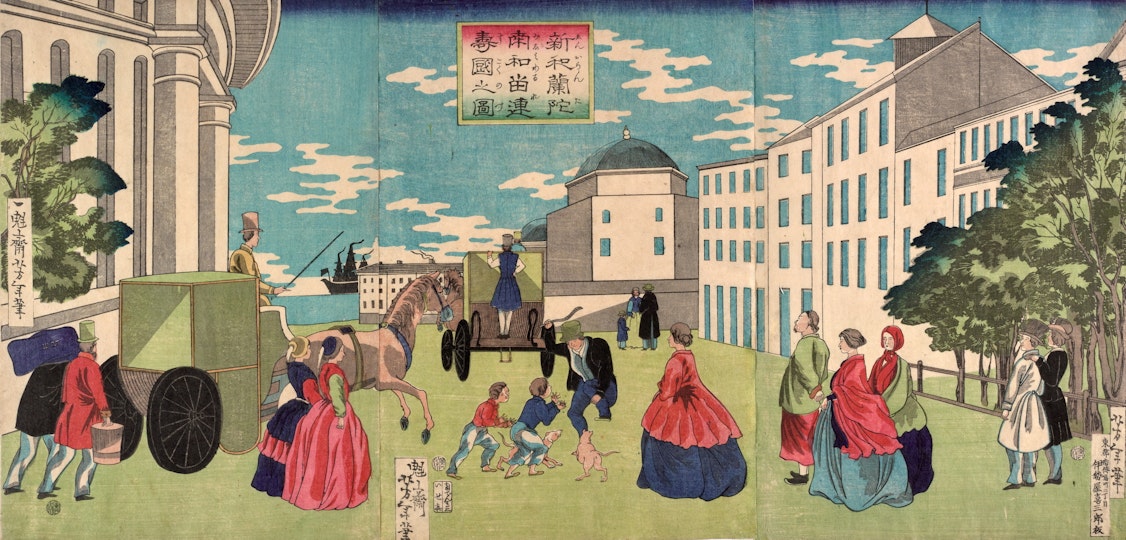
Tsukioka Yoshitoshi Picture of the country of New Holland South Wales (Shin Oranda Minami Waruresukoku no zu) 1866, Art Gallery of New South Wales
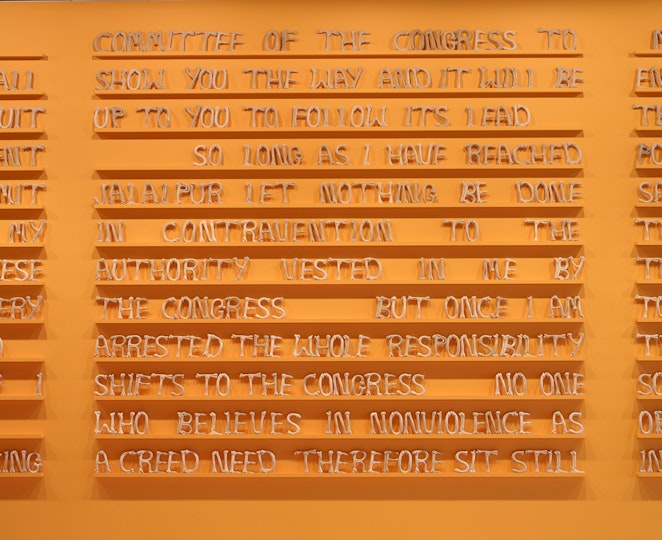
Jitish Kallat Public Notice 2 2007 (detail) Art Gallery of New South Wales © Jitish Kallat
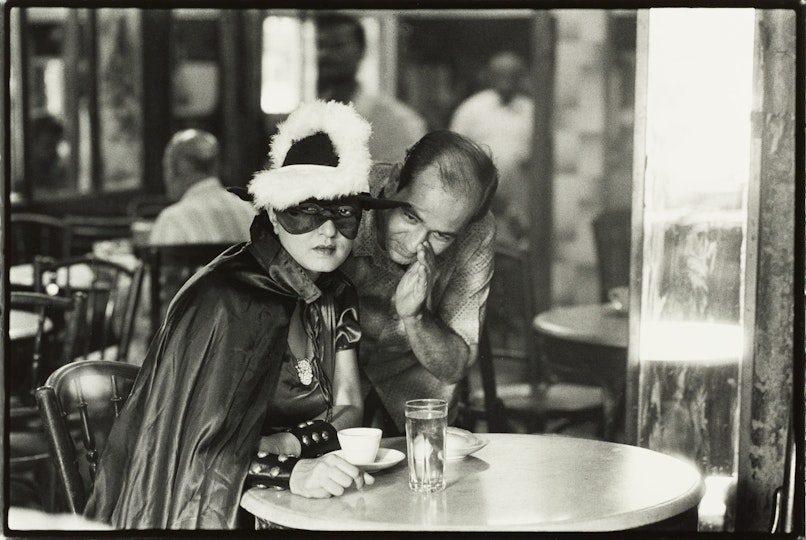
Pushpamala N Untitled 4 from the series Phantom Lady or Kismet: a photo-romance 1996–98, Art Gallery of New South Wales © Pushpamala N
An extended version of this article appeared in Look – the Gallery’s members magazine